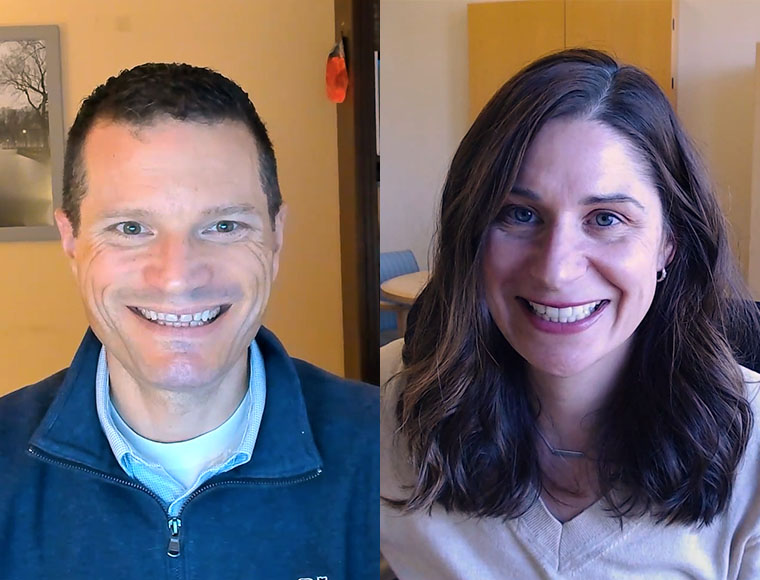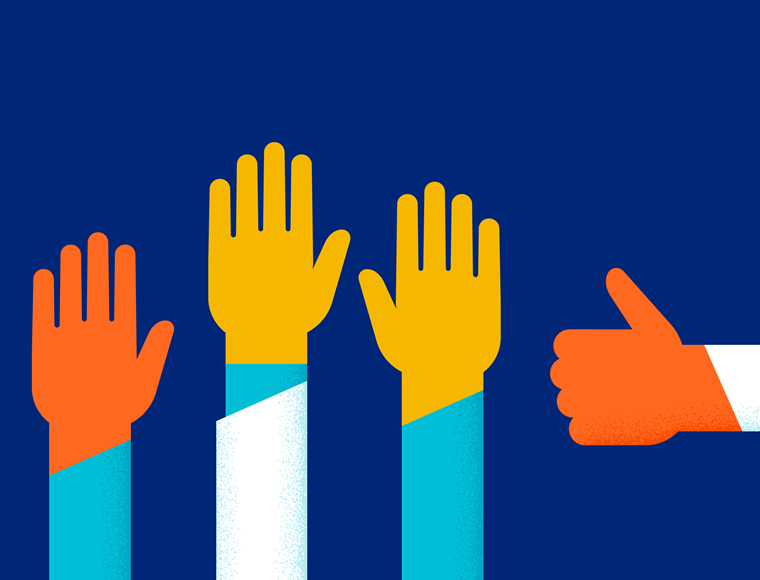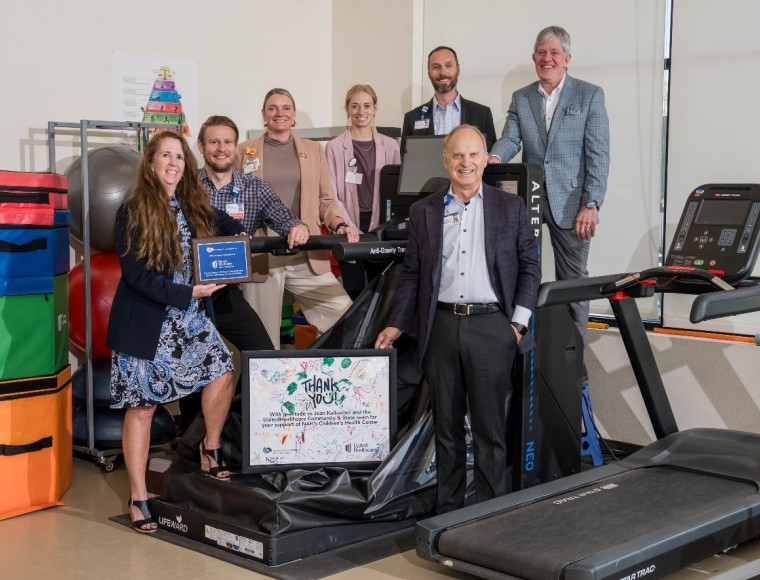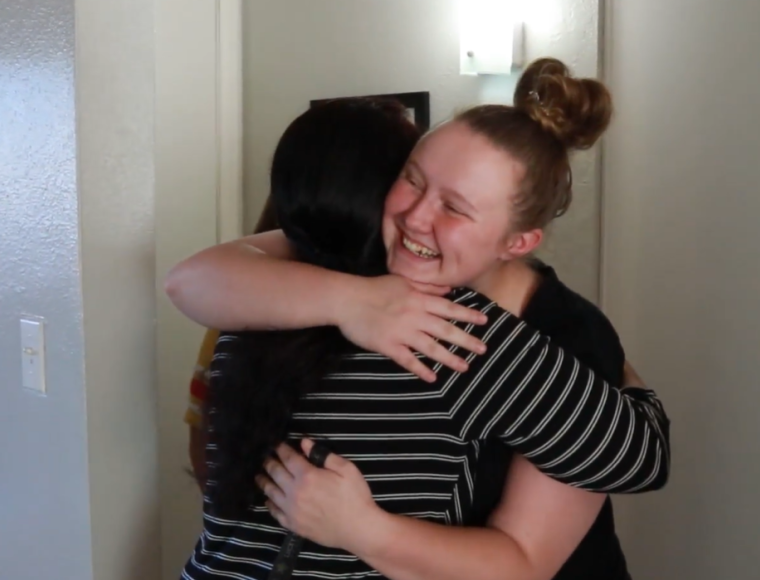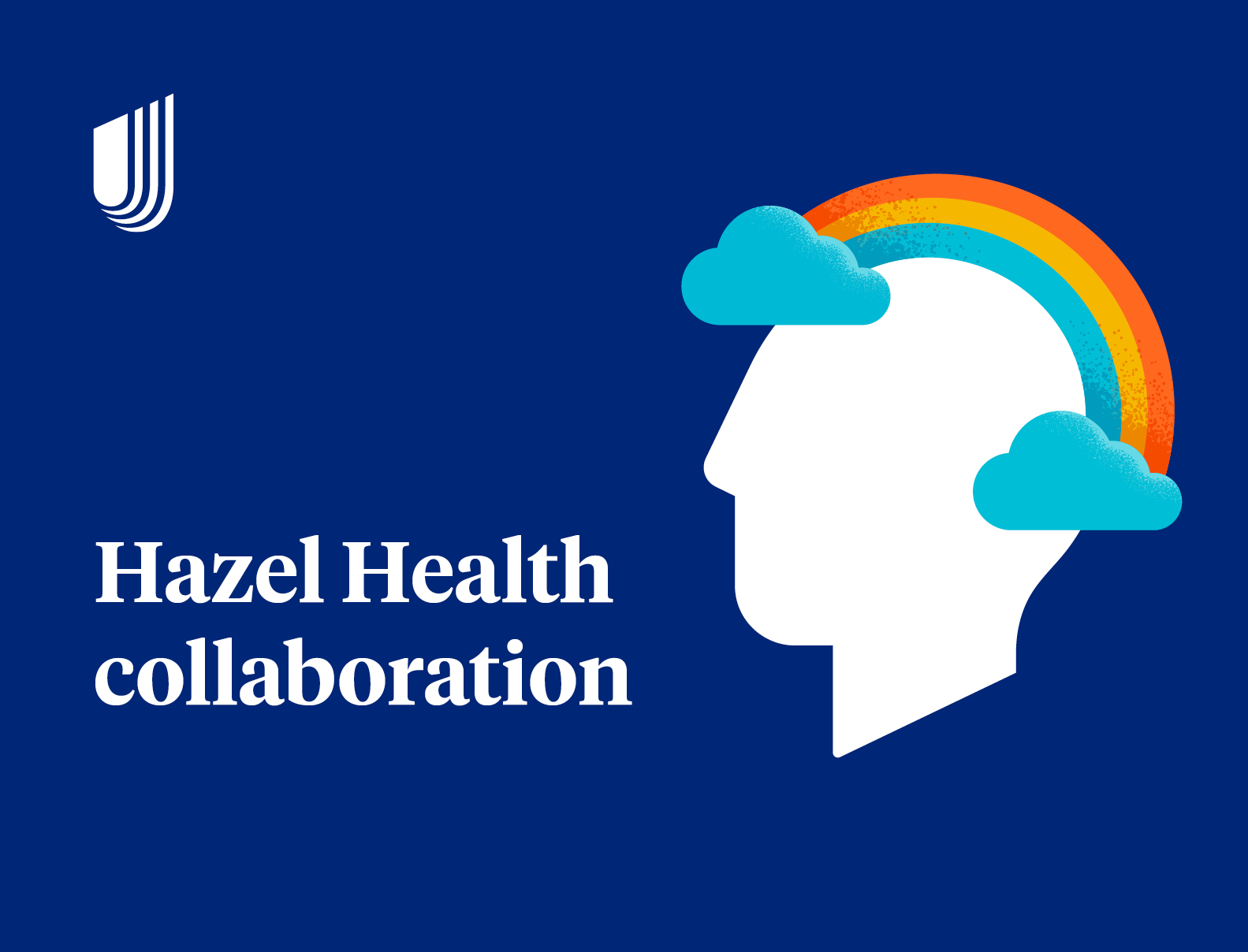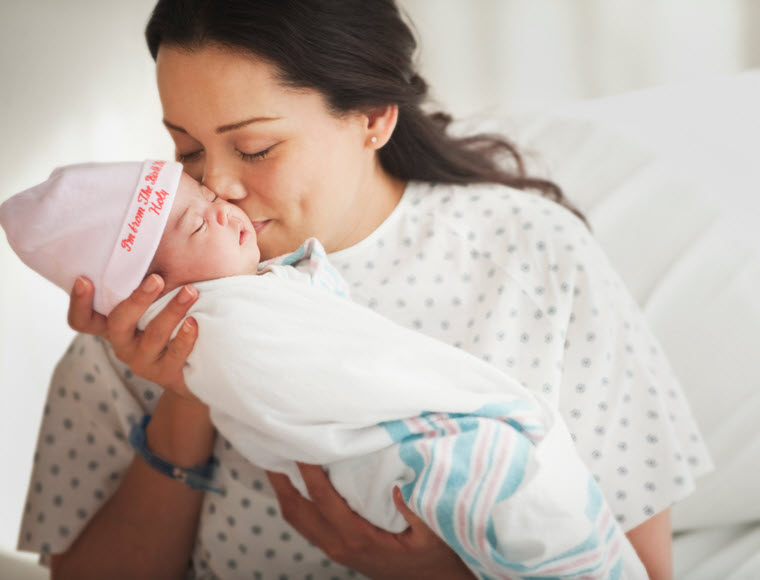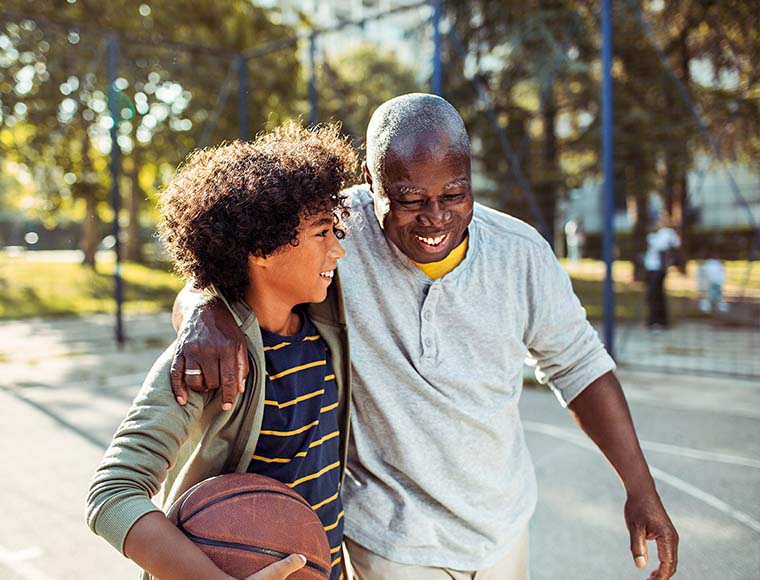UnitedHealthcare Community Plan of Pennsylvania member Ruby, aged 9, loves watching the birds in her backyard. For years, she hoped for a closer look, and to join her siblings Emma and Noah as they played outside.
Diagnosed with advanced spinal muscular atrophy, Ruby maneuvers her home environment using a wheelchair, and the concrete stairs leading from her house into her family’s patio and backyard are inaccessible by wheelchair. Lack of another means to get to the backyard left her to conduct her birdwatching from a window indoors.
But with the help of the UnitedHealthcare Community Plan of PA, Ruby’s mom, Gina, was able to work with United Disabilities Services Foundation (UDSF) to have a ramp added to her home’s exterior. As summer activities began to kick off, Ruby’s outdoor ramp was completed. The ramp not only provides Ruby with an accessible way to partake in her favorite activities but ensures she has a self-sufficient method to exit the house in the event of an emergency.
Gina described the ramp installation as nothing short of life-changing for Ruby. “I am blown away by how quickly and artfully this need was addressed, the solution was envisioned and the project was completed,” she said. “Thank you hardly seems to capture my gratitude. This has reinforced to Ruby that she has a place in the world and has also given her freedom and inclusion.”
For more than two years, the UnitedHealthcare Community Plan of PA has collaborated with UDSF to provide members with disabilities with home accessibility durable medical equipment solutions.
Importance of accessibility despite costs
One in four adults in Pennsylvania lives with a disability according to the Centers for Disease Control and Prevention (CDC).1 Of those adults, one in four aged 18 to 44 years has been unable to address their health care needs in the past year due to cost of services.
Disability-associated health expenditure (DAHE) per person in Pennsylvania increased by almost $6,000 per year from 20032 to 20213. Rising per-person DAHE can be attributed to the quantity and cost of services used, such as accessibility enhancements through home modifications.4 Home modifications are provided through waiver services and are considered permanent changes to the structure of the home, while home accessibility durable medical equipment encompasses Medicaid-covered removable items that facilitate accessibility.
Despite rising costs, accessibility enhancements can be a critical factor in quality of life. Home modifications and accessibility durable medical equipment have been found to have a significant positive impact on the overall health, well-being and self-sufficiency of people with disabilities.5 More specifically, a study published by the National Institute of Health found that people with disabilities who lived in a modified, accessible home experienced a reduction in depressive symptoms, physical injuries and mortality rates as well as an increase in perception of quality of life.
As of 2019, 50% of Medicaid Long Term Services and Supports (LTSS) spending was on members with disabilities under the age of 65.6 These services include assisted living and nursing facilities as well as home health aides. For members who require LTSS due to an inaccessible living environment, home modification or provision of home accessibility durable medical equipment would not only re-instate a level of independence but prevent ongoing LTSS costs as well.
United Disabilities Services Foundation
Within personal care and independence sits accessible home modifications services. Members utilizing this benefit are provided with consulting services – appraisal of the property and best fit solutions – as well as design and construction services.
Mason Smeltzer, director of construction services for UDSF, said collaboration with UnitedHealthcare has proven highly successful. “We sometimes organically source referrals from people calling into our resource center or through grant outreach covered by UnitedHealthcare. With these requests, we’ve had really good communication between our teams. We are able go out and successfully conduct a person-centered assessment to identify participant needs and come to the lowest cost, highest impact solution with the help of UnitedHealthcare.”
The impact for Ruby is that she can now participate in outdoor activities instead of observing from a distance. “Ruby and Emma are so very happy with the ramp,” said Gina. “Nearly every time Ruby has used it in the past few days she yelled out, ‘I love my new ramp!’”
Sources
- Disability Impacts All of Us Infographic | CDC
- National Health Care Expenditures Associated With Disability - PMC (nih.gov)
- Disability & Health U.S. State Profile Data: Pennsylvania | CDC
- State-Level Health Care Expenditures Associated With Disability - Olga A. Khavjou, Wayne L. Anderson, Amanda A. Honeycutt, Laurel G. Bates, NaTasha D. Hollis, Scott D. Grosse, Hilda Razzaghi, 2021 (sagepub.com) **This article was prepared by RTI under contract to the CDC
- Accessible Home Environments for People with Functional Limitations: A Systematic Review - PMC (nih.gov)
- 10 Things About Long-Term Services and Supports (LTSS) | KFF


